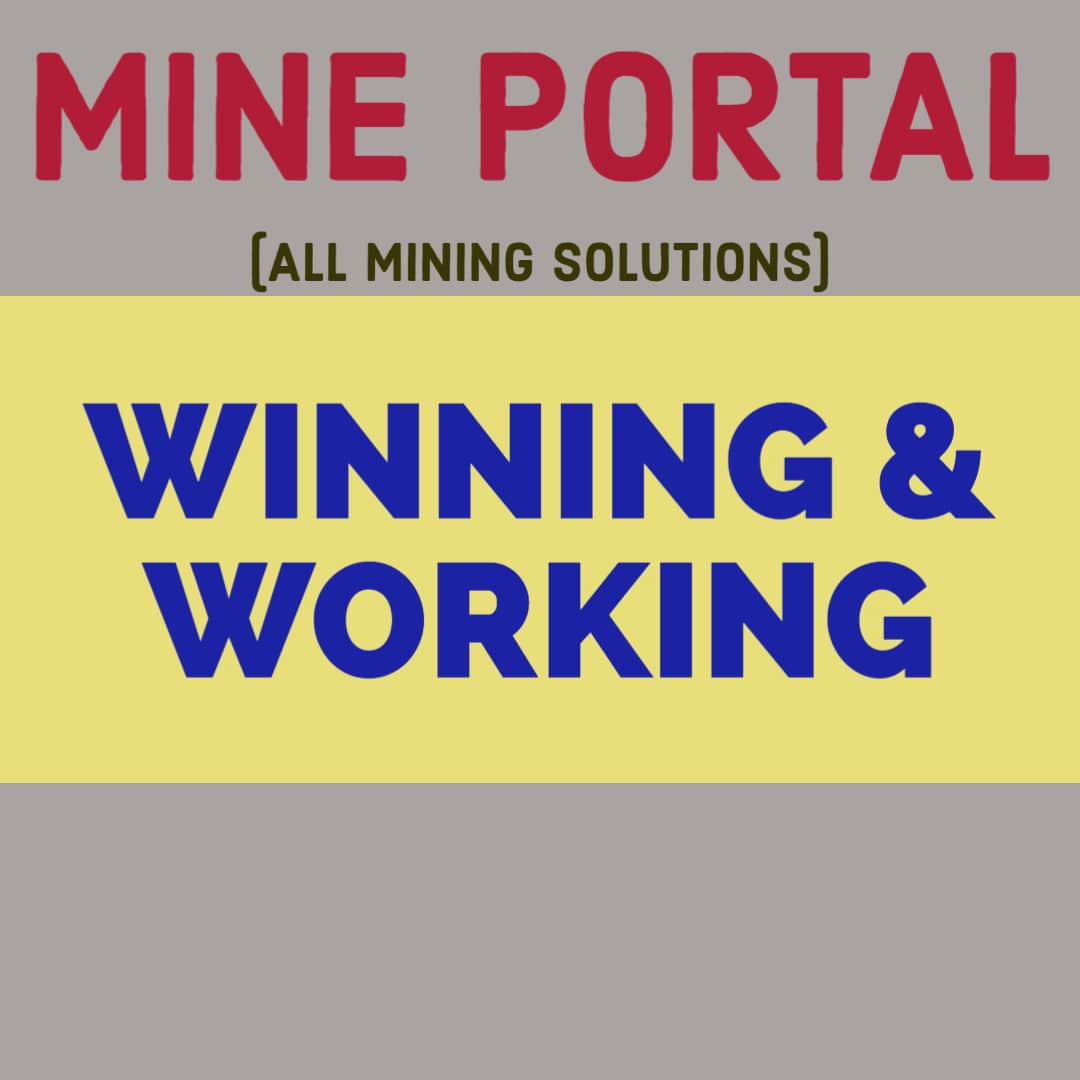
FMU-WINNING & WORKING DGMS EXAM SYLLABUS
SYLLABUS FOR EXAMINATION FOR FIRST CLASS MANAGER’S CERTIFICATE OF COMPETENCY
(Under Metalliferous Mines Regulations, 1961)
WINNING AND WORKING
Geology :- Characteristics and classification of mineral deposits; application of geology to mining; geological structures; folds, faults, fractures, fissures etc. methods of exploration and delineation of the ore bodies; boring through disturbed strata; bore hole survey; sampling; estimation of cut-off grade and ore reserve; losses of mineral in mining; net smelter return (NSR) to mill and mine; mine valuation; quality control, interpretation of geological maps.
Opening of mineral deposits; Legal requirement about outlets; siting; vertical and inclined shaft; adits; declines; shaft sinking and deepening; methods of sinking; mechanized sinking; in ordinary and water logged grounds, in running sand etc.; freezing, cementation and other special methods; shaft supports, temporary and permanent, tubings etc., recent developments.
Developments and layout of mines including surface and underground arrangements; layout and development of shaft-top and pit-bottom and haulage arrangements.
Underground Mining Methods; Choice of methods of developments and stopping and factors affecting the same; statutory provisions.
Primary and secondary Development; Choice of level interval and back/block length; main haulage drifts and tunnels; high speed drifting; excavation and equipping of grizzly (conventional and mechanized), ore/waste bin, main ore-pass system, underground crushing, loading and hoisting stations, underground service chambers, sump and other subsidiary excavations.
Cross-cut and drifts; raises and winzes; ground breaking; mucking; ventilation and support; extension of track and other services; modern drilling and loading equipment; Alimark and Jora-lift raising, long-hole and vertical crater retreat (VCR) raising; Raise boring systems; mechanized winzing.
Stopping :- Classification, selection of stopping methods and applicability; slope layouts, stope preparation and production operation ground breaking, mucking, ventilation, supports, haulage and dumping; stopping of narrow and wide ore bodies; mining of parallel veins; open, supported, filled and caving methods; combined systems and special methods; underhand, overhand, breast, long-hole and raise, resuing, room & pillar, sublevel, large diameter blast hole (DTH), cascade, shrinkage, vertical crater retreat, horizontal cut and fill, square set, top slicing, sub-level caving, block caving methods, combined open room, shrinkage and cut-fill and subsequent filling systems; hydraulic, thermal, hydro chemical, bio chemical and nuclear device mining system; design and construction of draw points; mechanics of draw and draw control procedure; recovery and dilution; problems of deep mining and the remedial measure; design and layout of stopes in rock burst prone mines, mining sequence and rationale.
Opencast Mining: Opening of deposits and preparation for excavation; box cut, types; selection of site; formation of production benches; ripping; types of rippers; concept of rippability and cycle of operation; drilling; blast hole drills; performance parameters; requirement of number of drills; blasting; blast design; factors influencing blast design; deep hold blasting; calculation of charge per hole; ground vibration; secondary blasting and problems of blasting side casting; environment friendly non-blasting techniques; safety aspects.
Discontinuous/cyclic methods of excavation and transport; shovel dumper operation; applicability of electric shovel and hydraulic excavators; cycle time and productivity calculation; estimation of equipment fleet; dragline operation; side casting; side cast diagram; calculation of reach; cycle time; productivity calculation; bucket capacity requirement; scrappers; types; methods of work; push pull operation etc., bucket wheel excavator; operational methods (lateral block, half block and full block etc.,) productivity calculation; continuous surface miner; operational methods (wide/full base methods, wide/full bench, block mining, stepped cut, empty travel back, turn back and continuous mining methods); conveyors; shiftable and high angle conveyors; mode of operation etc;, OITDS (operator independent truck dispatch system); in-pit crushing and strip-mining; safety aspect.
Application of concepts of Rock Mechanics for designing the methods of mining and strata control; Theories of ground movement and strata control; stress, strain, uniaxial and tri-axial strength, Poisson’s Ratio, Young’s Modulus, convergence, elasticity, litho static and hydrostatic pressure; rock mass classification, strength of pillars (crown/rib/sill/post) and shaft pillar; protection of surface structures; design and stability of structures in rock; design of support and reinforcement for underground excavations support resistance, yielding and non-yielding supports, dynamic and static loading, measuring instruments, consolidated and unconsolidated fills, rock bolts, cable bolts, latest developments in mine supports, economics of support design, cost benefit analysis subsidence; caving of rock mass; problems of deep mining; rock burst; monitoring of rock mass performance; mechanics of rock fragmentation; slope stability and dump stability; dump management; roof management.
Use and safe handling of explosives; blasting techniques and their relative efficiency; total cost concept.
Application of numerical modeling in mine design application of computers in mine design and operational controls.
CLICK ME TO DOWNLOAD THE SYLLABUS FOR FIRST CLASS UNRESTRICTED WINNING & WORKING DGMS EXAM SYLLABUS


No comments added yet!